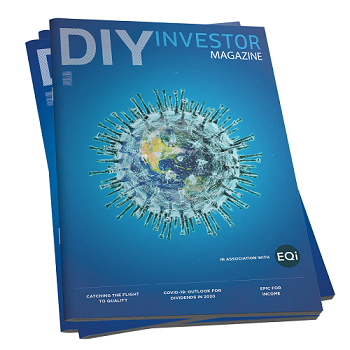Investing styles: core and satellite investing for your ISA or SIPP
Core and satellite investing is a method of portfolio construction designed to minimise costs and volatility while providing an opportunity to outperform a broad stock market or portfolio of markets as a whole; it is why some of the largest and best resourced investment funds in the world (pension funds and sovereign wealth funds) have adopted this approach, but there is no reason why it should not be used by the DIY investor in managing their ISA or SIPP – writes Tabitha James
The core of the portfolio consists of passive investments that track major market indices, such as the S&P 500, FTSE Allshare, Global Bonds.
Additional positions, known as satellites, are added to the portfolio in the form of actively managed investments or single stocks.
The advantages
A portfolio with a core of long-term low-cost investments and an outer layer of specialist or shorter-term holdings can:
- Spread risk – by increasing your overall number of stocks and bonds.
- Allow you to benefit from a variety of investment strategies e.g. active and passive.
- Reduce the volatility (the portfolio ups and downs) by having greater diversification.
- Reduce costs – by using passive funds / ETFs to hold the core – and mean less dealing for the satellite positions.
- Provide the potential to outperform the market – using satellites to take higher risk / conviction positions.
Portfolio Construction
First, look at the core portion of your portfolio. The assets will be allocated to investments that are designed to be managed passively. If you have a UK only portfolio you might use a FTSE Allshare tracker such as the Vanguard FTSE UK All Share Index Unit Trust or an ETF that tracks the same index such as
SPDR FTSE UK All Share UCITS ETF
For the actively managed portion, the goal is to select investments where a portfolio manager’s skill provides an opportunity to earn greater returns than those generated by the passive portion of the portfolio. In this example, you could put 20% into a small range of stocks in a particular sector or use a “high alpha” manager with concentrated stock portfolio e.g. bio tech for the balance
There are no fixed rules about the exact strategy – as Investopdiea notes: “The core portion of the portfolio can be used to track any index, including those that intentionally reflect a style bias for value over growth, growth over value, government bonds over corporate bonds, domestic markets over foreign markets or whatever you prefer. Similarly, the sky is the limit in the satellite portion.”
Costs
The core portion of the portfolio helps to minimise costs as passive investments are almost always less expensive than their active counterparts. Because indices change infrequently, transaction costs and tax are minimised.
While investors often have some knowledge of home stock markets e.g. UK investors have understanding of UK stocks, they tend not to have knowledge of overseas or other assets e.g. emerging market equities or global bonds.
A diversified, risk profiled, passive core can provide a great solution; a range of passive funds across asset classes from different managers. The investor selects from say, cautious, balanced or growth and then adds their particular satellites – stocks, ETFs, commodities etc.
Volatility
By dedicating a large portion of a portfolio to passive investments, the volatility of the total portfolio should be reduced – particularly if a range of markets and assets are selected. Adding investments, such as a commodities fund, which are not correlated to the movements of the stock market as a whole, may limit overall volatility when the markets are in flux. Adding a few single stocks will increase the return but also hopefully the reward.
Returns
Active managers seek to outperform their benchmarks but at a cost across the whole portfolio. By allocating a minority of the portfolio to active management or to an investor’s preferred stocks / fund the opportunity is in place for the portfolio to outperform the benchmark. But overall costs are reduced. This means the satellite adds to the return generated by the overall portfolio and resulting in benchmark-beating returns for the portfolio as a whole.
Conclusion
The core-satellite approach provides an opportunity to access the best of all worlds. Better-than-average performance, limited volatility and cost control all come together in a flexible package that can be designed specifically to cater to your needs. Perhaps it is why some of the largest and best resourced investment funds in the world (pension funds and sovereign wealth funds) have adopted this approach; we’d love to hear your experience ask@diyinvestor.net
Read more at
Read the latest edition of DIY Investor Magazine
DIY Investor Magazine
The views and opinions expressed by the author, DIY Investor Magazine or associated third parties may not necessarily represent views expressed or reflected by EQi.
The content in DIY Investor Magazine is non-partisan and we receive no commissions or incentives from anything featured in the magazine.
The value of investments can fall as well as rise and any income from them is not guaranteed and you may get back less than you invested. Past performance is not a guide to future performance.
DIY Investor Magazine delivers education and information, it does not offer advice. Copyright© DIY Investor (2016) Ltd, Registered in England and Wales. No. 9978366 Registered office: Mill Barn, Mill Lane, Chiddingstone, Kent TN8 7AA.

